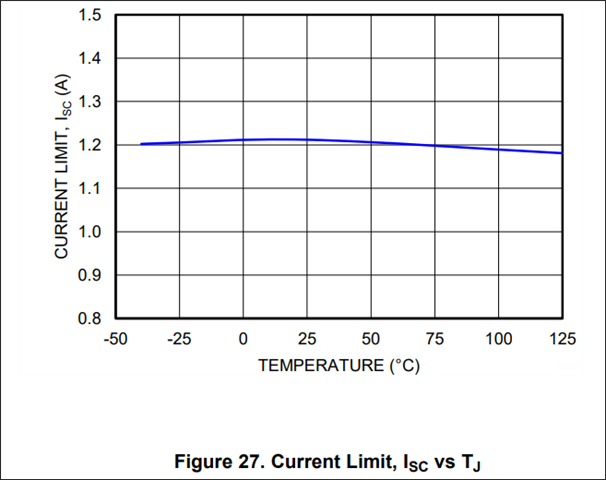Tool/software:
When the output current of the LP38798 reaches the short-circuit current limit (ISC, 0.85 to 1.6A), does the regulator maintain the output at that current level, or does it enter a cycle of turning on and off?
Tool/software:
When the output current of the LP38798 reaches the short-circuit current limit (ISC, 0.85 to 1.6A), does the regulator maintain the output at that current level, or does it enter a cycle of turning on and off?
Hello Tsuyoshi,
If the output is in short-circuit current limit, the current will stay around 1.2amps as long as the junction temperature does not exceed the thermal shutdown threshold of 170C.
When the junction temperature of the die reaches 170C, the device shuts off to protect itself and goes back to regulation until the temperature drops back to a safe limit. The hysteresis is typically 12C, so if the device enters thermal shutdown, it will power off and will turn back on once the temperature is close to 158C. This is called thermal cycling and it happens when there is poor thermal dissipation, or the ambient temperature is elevated.
To prevent this condition, the die temperature should not exceed the recommended temperature of 125C as per table 6.3 - Recommended Operating Conditions of the datasheet (https://www.ti.com/lit/ds/symlink/lp38798.pdf).
For instance, if the dropout voltage (Vin - Vout) is 800mv, and the device enters current limit at 1.2amps, assuming the device is mounted in a Jedec A 2s2p (double signal layer, double buried power plane) configuration pcb (https://www.ti.com/lit/an/spra953d/spra953d.pdf) the maximum operating ambient temperature is:

TA (max) = 125°C - (0.8v * 1.2A) * (35.4 °C/W)
TA(max) = 91.016°C

Best regards,
Daniel